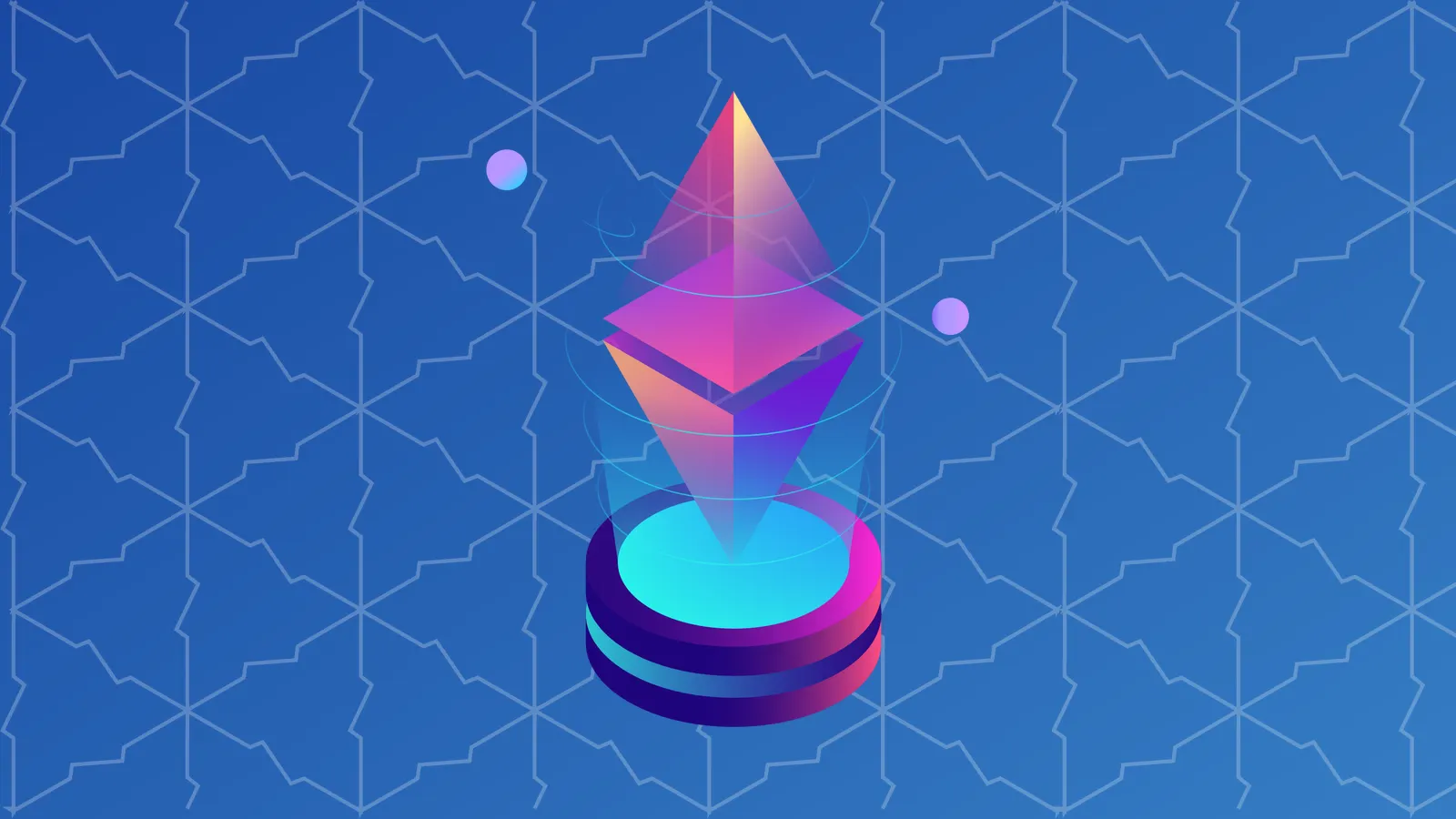The long-awaited Ethereum 2.0 upgrade is near.
The multi-phased upgrade aims to improve the Ethereum network’s scalability and security through several changes to the network’s infrastructure—most notably, the switch from a proof-of-work (PoW) consensus mechanism to a proof-of-stake (PoS) model.
What is Ethereum 2.0?
Ethereum 2.0, also known as Eth2 or “Serenity,” is an upgrade to the Ethereum blockchain. The upgrade aims to enhance the speed, efficiency, and scalability of the Ethereum network so that it can avoid bottlenecks and process more transactions simultaneously.
But Ethereum 2.0 also doesn't really exist—in January 2022, the Ethereum Foundation said it would stop referring to the upgrade as Ethereum 2.0. The rebrand is intended to reflect the fact that what's happening is a network upgrade rather than the launch of a new network. Accordingly, Eth1 is now known as the "execution layer," where smart contracts and network rules reside, while Eth2 is referred to as the "consensus layer," which ensures that devices contributing to the network are acting in accordance with its rules.
The name Ethereum 2.0 has stuck, however.
When is Ethereum 2.0 happening?
Ethereum 2.0 is launching in several phases, with the first upgrade, called the Beacon Chain, going live on December 1, 2020. The Beacon Chain introduces native staking to the Ethereum blockchain, a key feature of the network’s shift to a PoS consensus mechanism. As the name suggests, it is a separate blockchain from the Ethereum mainnet.
The second phase, called "the Merge," is expected in the second quarter of 2022 and will merge the Beacon Chain with the Ethereum mainnet.
The final phase is shard chains, which will play a key role in scaling the Ethereum network. Instead of settling all operations on one single blockchain, shard chains spread these operations across 64 new chains.
This also means that it will become much easier from a hardware perspective to run an Ethereum node, because there will be far less data that needs to be stored on a given machine.
The full upgrade to Ethereum 2.0 is expected to take place by 2023, according to the Ethereum Foundation.
How does Ethereum 2.0 differ from Ethereum?
While Ethereum 1.0 uses a consensus mechanism known as proof-of-work (PoW), Ethereum 2.0 will use a proof-of-stake (PoS) mechanism.
How does proof of stake differ from proof of work?
With blockchains such as Ethereum, there is a need to validate transactions in a decentralized way. Ethereum, like other cryptocurrencies such as Bitcoin, currently uses a proof-of-work consensus mechanism.
In this system, miners use a machine’s processing power to solve complex mathematical puzzles and verify new transactions. The first miner to solve a puzzle adds a new transaction to the record of all transactions that make up the blockchain. They are then rewarded with the network’s native cryptocurrency. However, this process can be hugely energy-intensive, especially as the processing power used by miners that didn't solve the puzzle goes to waste.
Proof of stake means that, instead of relying on miners, individual users can stake a network’s native cryptocurrency and become validators. Validators are similar to miners in that they verify transactions and ensure the network isn’t processing fraudulent transactions.
These validators are selected based on how much crypto they have staked, and how long they’ve staked it for.
Other validators can then attest that they have seen a block. When there are enough attestations, a block can be added to the blockchain. Validators are then rewarded for the successful block proposition. This process is known as “forging” or “minting.”
The main advantage of PoS is that it is far more energy-efficient than PoW, as it decouples energy-intensive computer processing from the consensus algorithm. It also means that you don’t need a lot of computing power to secure the blockchain.
Speaking at Camp Ethereal in March 2022, Lubin said that the impending upgrade will "lay to rest proof-of-work, will lay to rest Ethereum's carbon or energy footprint problem," describing Ethereum 2.0 as being "0rders of magnitude less expensive, energetically."
How will Ethereum 2.0 scale better than Ethereum 1.0?
One of the main reasons for the upgrade is scalability.
The current Ethereum network can only support around 30 transactions per second; this causes delays and congestion. Ethereum 2.0 promises up to 100,000 transactions per second. This increase will be achieved through the implementation of shard chains.
Did you know?
The current Ethereum setup has a blockchain consisting of a single chain with consecutive blocks. This is secure but very slow and inefficient. With the introduction of shard chains, this blockchain is split up, enabling transactions to be handled in parallel chains instead of consecutive ones. This speeds up the network and can scale more easily.
How will Ethereum 2.0 be more secure?
Ethereum 2.0 has been devised with security in mind. Most PoS networks have a small set of validators, which makes for a more centralized system and decreased network security. Ethereum 2.0 requires a minimum of 16,384 validators, making it much more decentralized—and hence, secure.
How could Ethereum 2.0 affect Ethereum’s price?
More scalability means more usage, which, in turn, means more demand. Which—at least in theory—should propel the price of Ethereum to new heights.
“By the time ETH 2.0 and rollups work together there will be 100,000 transactions per second capacity. That’ll mean a completely seamless experience for the next billion people,” Jamie Anson, founder of Nifty Orchard and organizer of Ethereum London, told Decrypt.
Matt Cutler, CEO of Blocknative, is equally optimistic, particularly as gas fees are expected to decrease with the launch of Ethereum 2.0.
“Our customer base sees reducing transaction fees and increasing network throughput as big opportunity areas moving forward,” he told Decrypt.
Moreover, as the ecosystem takes notice of major milestones, Ethereum developer momentum will be reinforced. “This will have a long-term bullish impact on the price of ETH—notwithstanding the short-term volatility, which is part-and-parcel of crypto-asset valuations,” Cutler added.
The future for Ethereum 2.0
It's hard to clearly see the future, as so much has changed during the journey.
For instance, previous iterations of the roadmap placed the Merge event after the launch of shard chains. That was changed after a "boom of layer 2 scaling solutions," according to the Ethereum Foundation. Therefore, it said, "the priority has shifted to swapping proof-of-work to proof-of-stake via the Merge.”
Back in 2020 Ethereum co-founder Vitalik Buterin laid out a roadmap of how the next five to ten years could pan out for Ethereum 2.0.
The bulk of the challenges, he said, were now “increasingly around development, and development's share of the pie will only continue to grow over time."
In June 2020, Buterin noted that Ethereum 2.0 will need to rely on current scaling methods such as ZK-rollups for at least two years before implementing shard chains.
August 2021 saw the deployment of Ethereum's London hard fork and Ethereum Improvement Proposal 1559 (EIP-1559), which changed how transaction fees work on the network. EIP-1559 sees users who make a transaction on the network pay a base fee that's burned instead of going to Ethereum miners, reducing the supply of ETH and placing deflationary pressure on the Ethereum network.
The London hard fork served as something of a trial run for the next phase of Ethereum 2.0, with Vitalik Buterin expressing confidence about what follows. Buterin told Bloomberg that the successful launch of the London hard fork proves the Ethereum ecosystem is "able to make significant changes," and that it "definitely makes me more confident about the merge."
Daily Debrief Newsletter
Start every day with the top news stories right now, plus original features, a podcast, videos and more.




